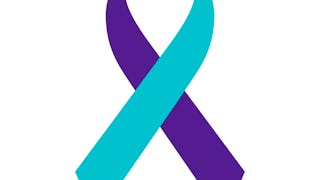Responsible Reporting on Suicide for Journalists is designed to give working journalists and students who are interested in the field an understanding of how news media can impact suicide trends and how that power can be used to improve public health. An extensive body of research shows that certain methods of reporting on suicide deaths can increase the number of subsequent suicides among the public. Conversely, responsible methods of reporting on suicide can increase the likelihood of people seeking help. The World Health Organization and the Centers for Disease Control and Prevention have both identified responsible suicide reporting among the media as a key mechanism for suicide prevention. This course aims to give journalists the concrete tools they need to fulfill that goal and make a positive public health impact with their reporting.

Gain next-level skills with Coursera Plus for $199 (regularly $399). Save now.

(12 reviews)
Recommended experience
Skills you'll gain
Details to know
8 assignments
See how employees at top companies are mastering in-demand skills

There are 3 modules in this course
What's included
3 videos8 readings3 assignments1 plugin
What's included
4 videos11 readings2 assignments
What's included
6 videos14 readings3 assignments4 plugins
Instructors

Offered by
Explore more from Public Health
 Status: Preview
Status: PreviewWesleyan University
 Status: Preview
Status: PreviewHuddersfield Sandbox
 Status: Free Trial
Status: Free TrialMichigan State University
 Status: Free Trial
Status: Free TrialMichigan State University
Why people choose Coursera for their career




Learner reviews
12 reviews
- 5 stars
91.66%
- 4 stars
0%
- 3 stars
0%
- 2 stars
0%
- 1 star
8.33%
Showing 3 of 12
Reviewed on Jul 24, 2025
Very informative about how to and not to report on suicide, with a variety of additional helpful articles and sources
Reviewed on Jul 20, 2022
This course is essential for journalists. It is fact-based and provides repeated and varied opportinities to engage with the material through audio/video/text articles and assignnents.
Reviewed on Jul 30, 2023
the Course was quite interesting.i gained a lot of knowledge.at first I thought it to be a small content course but found it to be amazing and very well organised.

Open new doors with Coursera Plus
Unlimited access to 10,000+ world-class courses, hands-on projects, and job-ready certificate programs - all included in your subscription
Advance your career with an online degree
Earn a degree from world-class universities - 100% online
Join over 3,400 global companies that choose Coursera for Business
Upskill your employees to excel in the digital economy
Frequently asked questions
To access the course materials, assignments and to earn a Certificate, you will need to purchase the Certificate experience when you enroll in a course. You can try a Free Trial instead, or apply for Financial Aid. The course may offer 'Full Course, No Certificate' instead. This option lets you see all course materials, submit required assessments, and get a final grade. This also means that you will not be able to purchase a Certificate experience.
More questions
Financial aid available,



